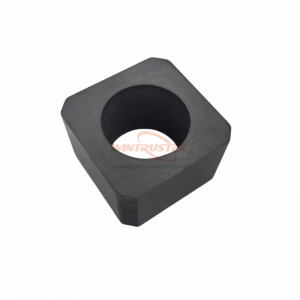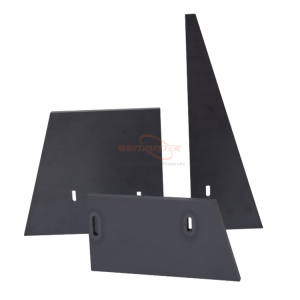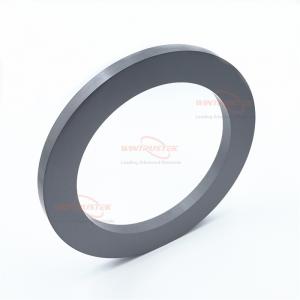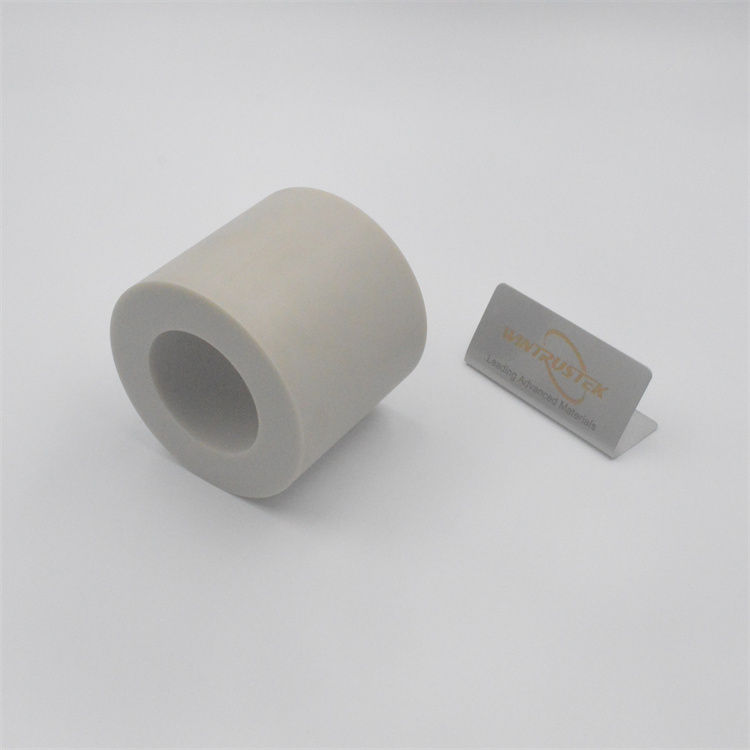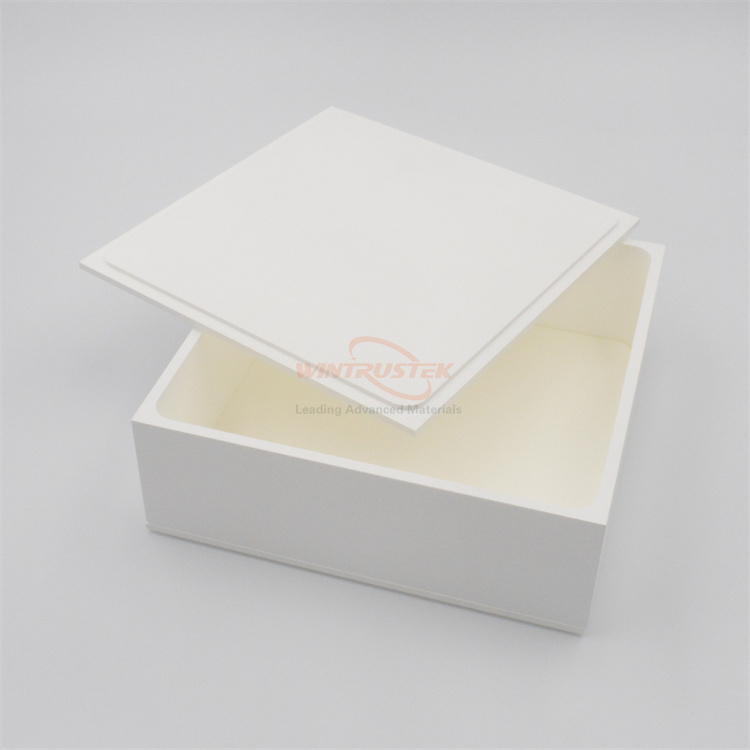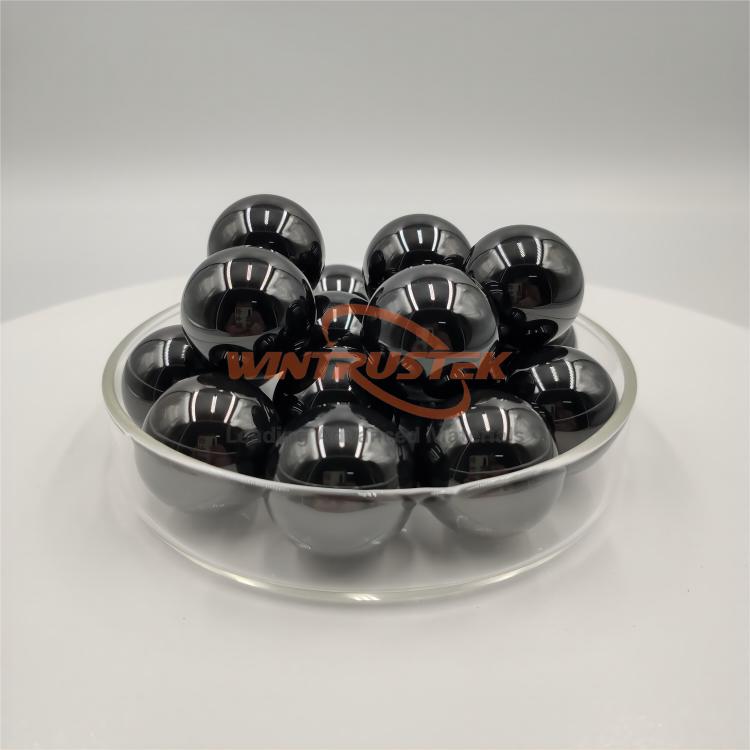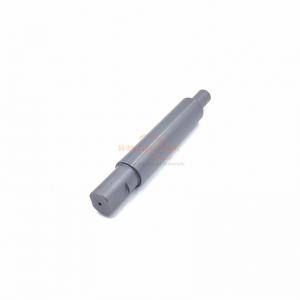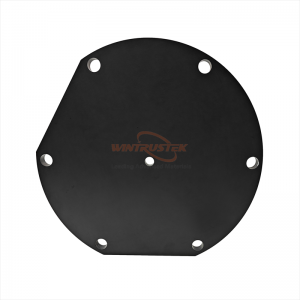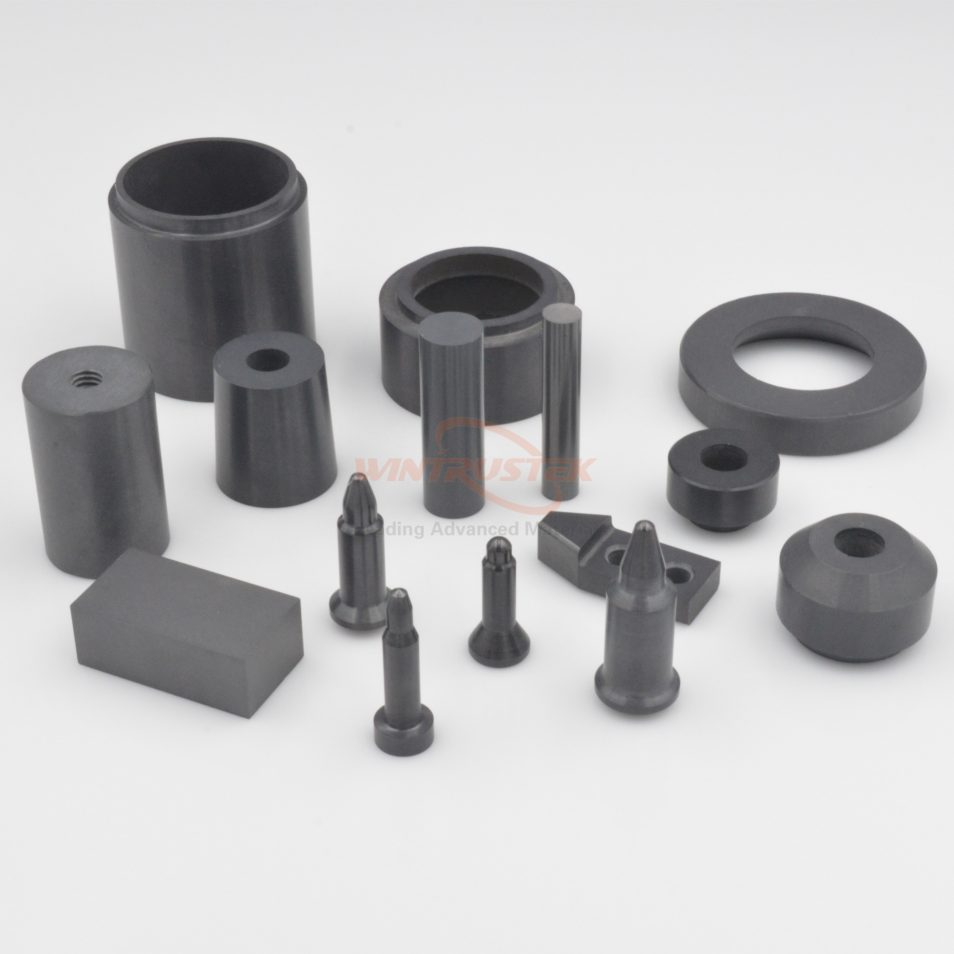
(Gas Pressure Sintered Si3N4 Ceramic Produced by Wintrustek)
Materials are sintered under high-pressure gas conditions in a process called gas pressure sintering, which enhances densification and material qualities. Materials with high melting points or those that are challenging to sinter using conventional techniques benefit most from it.
The GPS process is unique in that it involves a series of steps: low pressure dewaxing, normal pressure sintering, and high pressure sintering once the material has reached a state where only closed pores remain. This process further densifies the material and expedites the removal of any remaining pores. Thus, the general mechanical properties (strength, hardness, fracture toughness and Weibull-modulus) of materials made using GPS technology are better than those of pore-free materials made using the traditional sintering process.
Mechanism:
The substance is heated under controlled conditions, usually in a furnace built to handle high pressures. The sintering chamber is filled with a high-pressure gas, usually an inert gas like nitrogen or argon. By facilitating atom diffusion across particle boundaries, the gas pressure reduces porosity and promotes densification.
Advantages:
Improved Densification: Applying gas pressure results in improved mechanical qualities and a higher density.
Better Microstructure: The procedure produces a finer-grained, more consistent microstructure, which improves the material's functionality.
Versatility: Fits various materials, such as high-melting-point metals and ceramics.
Gas Pressure Sintered Silicon Nitride Ceramic:
The most popular technique for creating intricate geometric silicon nitride pieces with great strength is Gas Pressure Sintered silicon nitride ceramic. Thus, when we typically use the term "silicon nitride ceramics," we implicitly infer that they are gas-pressure ceramics.
The procedure involves mixing a portion of the binder to increase the mechanical strength of the green ceramic body and using silicon nitride powder that has been thoroughly combined with a sintering aid to encourage liquid phase sintering (often yttrium oxide, magnesium oxide, and/or aluminum oxide). After pressing silicon nitride powder into the required shape, green body processing is carried out. Lastly, the pressed green body is put in a nitrogen-filled sintering furnace and sintered at a high temperature to form.
Common requirements for gas pressure sintering include a controlled sintering temperature of 2000°C and a pressure of 1–10 MPa, which is marginally greater than that of other sintering techniques. Si3N4 grain development can also be encouraged by using fewer sintering aids. A long columnar grain ceramic with great density and strength is the finished product. Gas pressure sintering produces silicon nitride, which is extremely strong, durable, and resistant to wear. It offers a greater range of applications than silicon nitride made by other methods because it can simultaneously form and sinter products of different complicated shapes.
Applications:
Apart from thermocouple protection tubes, melting metal crucibles, ceramic tools, rocket nozzles, roller rings, sealing rings, and vessels for transporting molten metal, gas pressure sintered silicon nitride ceramics are also widely used in high temperature and high-stress components in gas turbines.
Except for silicon nitride ceramic, Wintrustek also has Gas Pressure Sintering AlN Ceramic.
Conclusion:
Gas pressure sintering is an advanced technology that uses high-pressure gas to improve the sintering process and produce materials with better macrostructure, density, and overall performance. This technique is especially useful for high-tech fields' sophisticated materials.







